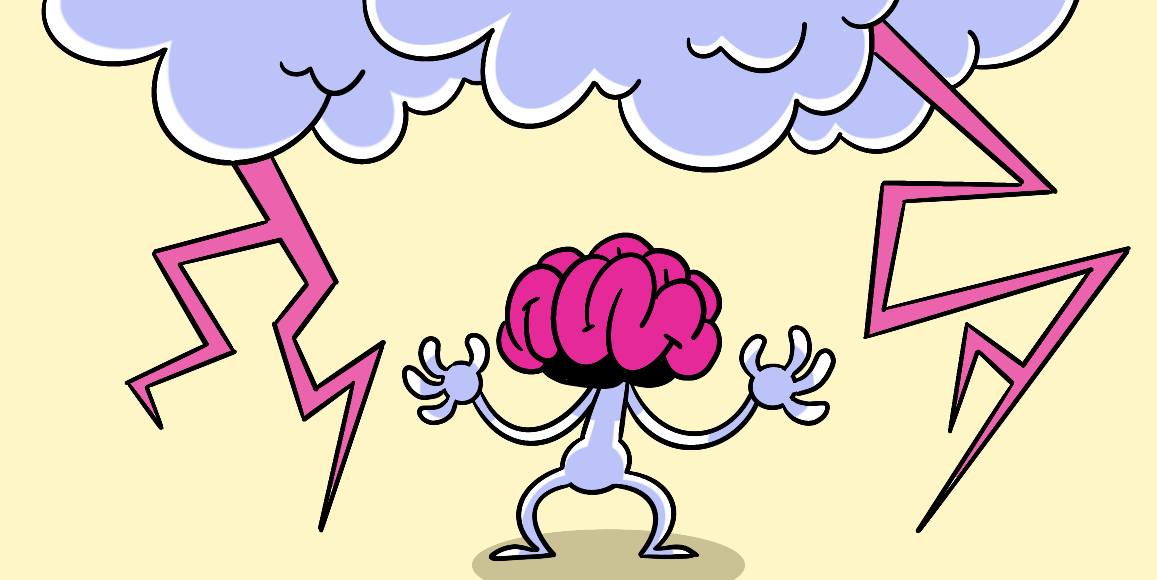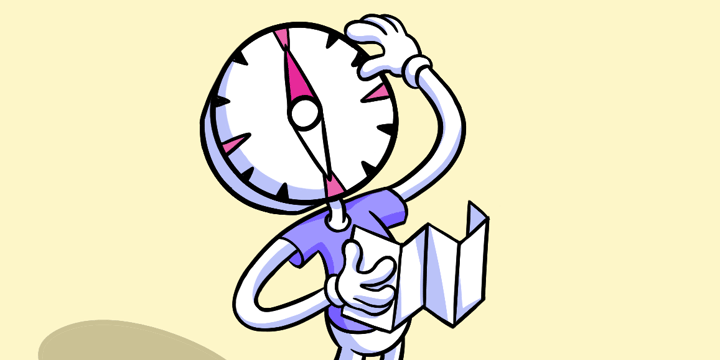Brainstorming
A design method for creative problem-solving that helps teams unstuck and generate ideas.
The nuts and bolts: Brainstorming is a group creativity technique that involves gathering a list of ideas from the group’s members in order to come up with a solution to a specific problem.
Most companies wish they could be more creative. This is a great thing to shoot for, but few do it well. Brainstorming creates a disarming and non-threatening environment. Teams click. Inhibitions lower. Ideas flow. That’s the bonding benefit that can come from good brainstorming sessions. It tends to spill over to future collaborative work among the group.
People tend to think of brainstorming as a free-for-all, but that mentality can quickly lead to an opposite anti-method known as “lamestorming.” Basics rules and structure govern a brainstorm session to ensure the exercise is fun and productive.
The Eye of the Brainstorm
Competition is fierce. To survive and thrive we’ve got to look for ways to speed up the pace of innovation in our team. Brainstorming is a secret weapon designers get to use at the front end of the process. It helps us get unstuck. It is also the antidote to a narrow corporate approach that would jump from idea (strategy) straight into execution (implementation).
At our ZURBwired 24-hour event, we redesign and relaunch an entire website (and more) within the span of one day, so you would think we would cut corners like brainstorming to save time. No way.
Every step of the way, we brainstorm to push boundaries and explore better ways of solving very specific problems. You can see it all over Rebekah Children’s Services. Goals were laid out, rehashed, and reset. Competition was diced up and lessons were taken away. Analytics were mined for insights. All of this helped influence waves of brainstorming to lay the groundwork for a better website.
While we have found brainstorming effective in moving forward our design process, there has been some debate over whether individuals can generate more ideas than in a group brainstorm. However, a 1996 study from Administrative Science Quarterly found that brainstorming was very effective for designers at IDEO.
In any case, brainstorming opens up the front end of the design funnel to expose the team to chance opportunities that could be game-changing for a product or a company.
Our Cast of Players
Brainstorms are fun, especially when they yield some inspiring results! However, people in a brainstorm have specific roles they play during a session. The three most important roles you need for even a small group brainstorm of five people or less are:
The Facilitator
Sets up the structure of the brainstorm and makes sure participants follow through with it. It is the Facilitator’s job to keep people in line and gently ding people for breaking the rules. Role of a Facilitator and the 10 great facilitator personas.
The Scribe
An outstanding listener and super-fast writer who can tune in to every idea the team generates. They have to capture it so it’s visible to the entire group and do this quickly to ensure everyone knows they were heard and give people the chance to build off each other’s contributions.
Participants
Important that they know the rules, understand how they should expect to participate, and approach it with an open mind. A great observation by Dan Roam is that anybody can brainstorm, but they can fall into three buckets. Knowing which each person fits can help a facilitator bring the best out of anybody.
- Black pen people.They love adding ideas and working out new solutions. You’ll see them furiously scribbling to add their idea to the board as a sketch or post-it note. Watch out and help them to keep their sparks on topic.
- Yellow pen people. They like it when others make the first move. They’ll add ideas that play off of others. Post-it notes and highlight pens fit their comfort zone best. Together with a black pen person, they make a mean idea generating machine.
- Red pen people. They get a bad rap, but can add value to a brainstorm big time. These can be the most difficult to brainstorm with because they tend to analyze and edit down other people’s ideas. The trick is getting them to say “yes, and …” during a session and then providing them an opportunity to steer the team’s selection of ideas toward the end.
Fun With A Few Rules
Brainstorming may sound like all fun and games, but it only works when participants adhere to roles and rules. Doesn’t that kill the fun? No, actually constraints reduce uncertainty and stress and allow teams to get more creative. We actually post these prominently in the room as a reminder to everyone to be on track. It makes it easy to bring people back in line when you can point to an agreed upon rule when they’re breaking it!
The critical rules we follow in any good brainstorm are:
- Defer Judgement. This is the hardest rule to keep. Don’t criticize any idea in a brainstorm at first. Encourage participation. The collective expertise of your group will trump the individual expertise of your most brilliant member every time if it’s given a chance.
- Encourage wild ideas. The more and the crazier, the better. If you think ideas must all be rational, you have no points to jump off from to create truly innovative ideas.
- Build off the ideas of others. Never say “but,” only use “and.” Again, defer judgment and build on the ideas of others. Don’t interrupt or dismiss what others say. Focus on quantity of ideas, not quality at first.
- Quantity rules. One of the most important tricks of designing is exploring a large quantity of ideas first. The more, the better. Quantity rules in a brainstorm, not quality. Decisions and analytical thinking come after the brainstorm session.
- Stay focused on the topic. Keep one conversation going at a time and keep it focused on the topic at hand to get the most out of the collective brainpower of your group. Timebox your brainstorm to keep it from drifting into other topics.

A whiteboard after one of our brainstorming sessions.
Beware “Lamestorming”
Even if you adopt the roles and rules, a brainstorm session can turn bad if it falls prey to some common showstoppers:
- Blocking. You have to keep the group flow going and get comfortable talking together as a group, or even over each other. Break down people’s sense of being rude. Avoid letting any one person dominate the talking (especially the boss) and avoid taking turns. Brainstorms should be noisy with lots of ideas being shouted out. Don’t turn it into just another meeting.
- Avoid negating or critiquing ideas during a brainstorm. “No, But …” will kill momentum quickly, change the mood, and derail the entire group. Instead, as in improv, adopt a “yes, and…” approach to build off each other’s ideas. For first-timers, the facilitator is going to have to work extra hard to keep people in line. At IDEO, Peter Skillman would ring a bell to call out anybody breaking this rule.
- Avoid open-ended questions. Firm statements or ideas are easy to build off of, whereas open-ended questions or topics can derail idea generation by begging for analysis and answers. Whenever a question like, “do you know if our competitors have already tried this?,” we quickly want to add that idea to the side of the whiteboard so it’s out there, but not getting in the way. The person asking will feel comfortable they’ve been heard, but the group will be directed back on the original topic.
- Not following up. Nothing kills a great brainstorming session like not following up with participants to reiterate the output, the positive results, and show how it’ll be applied to something next. Nobody will want to join the next one if they know the last one didn’t appear to accomplish anything.
Get Started Tomorrow
The only way to get good at this is to practice. Do your homework on the roles and rules. Pick a focused topic your team could use a spark on. Rally a small team — make it easy on yourself and keep it to three or four people — and facilitate your first true brainstorming session together.
After it’s done, be sure to follow up with the team about the output, the results, and the next steps you’ll take. Have the Scribe assemble the notes in a sharable form and shoot out a follow-up email, reminding everyone of the ideas explored and the takeaways from each one.
Take those next steps to follow through on the ideas, meeting again to further refine and iterate. Nothing kills a brainstorm quite like never hearing about it again afterward.
You don’t even need a room full of people. Virtual tools like Helio can help facilitate brainstorm sessions with your target audience. Test concepts with them with a survey. Brainstorm from afar with this template.







